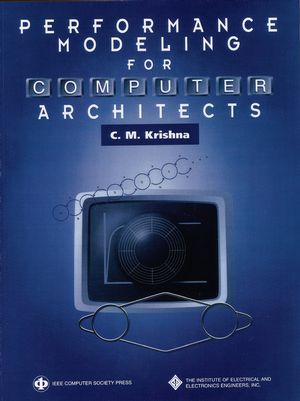Performance Modeling for Computer ArchitectsISBN: 978-0-8186-7094-7
Paperback
404 pages
October 1995, Wiley-IEEE Computer Society Press
 This is a Print-on-Demand title. It will be printed specifically to fill your order. Please allow an additional 10-15 days delivery time. The book is not returnable.
|
||||||
As computers become more complex, the number and complexity of the
tasks facing the computer architect have increased. Computer
performance often depends in complex way on the design parameters
and intuition that must be supplemented by performance studies to
enhance design productivity.
This book introduces computer architects to computer system performance models and shows how they are relatively simple, inexpensive to implement, and sufficiently accurate for most purposes. It discusses the development of performance models based on queuing theory and probability. The text also shows how they are used to provide quick approximate calculations to indicate basic performance tradeoffs and narrow the range of parameters to consider when determining system configurations. It illustrates how performance models can demonstrate how a memory system is to be configured, what the cache structure should be, and what incremental changes in cache size can have on the miss rate. A particularly deep knowledge of probability theory or any other mathematical field to understand the papers in this volume is not required.
This book introduces computer architects to computer system performance models and shows how they are relatively simple, inexpensive to implement, and sufficiently accurate for most purposes. It discusses the development of performance models based on queuing theory and probability. The text also shows how they are used to provide quick approximate calculations to indicate basic performance tradeoffs and narrow the range of parameters to consider when determining system configurations. It illustrates how performance models can demonstrate how a memory system is to be configured, what the cache structure should be, and what incremental changes in cache size can have on the miss rate. A particularly deep knowledge of probability theory or any other mathematical field to understand the papers in this volume is not required.



